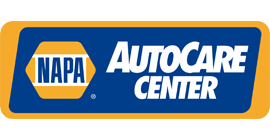
Archive for November 2024(Timing Belt)Posted November 24, 2024 2:15 AMYou may have heard about an important part of your vehicle's engine called a timing belt, and many know that if that belt breaks, it can cause some very serious engine problems. Not all vehicles have them, and the ones that do generally have smaller engines. The timing belt keeps the engine synchronized so that every time a spark plug fires, the crankshaft, camshaft, pistons, and valves are all working together. Timing belts will eventually have to be replaced, and most vehicle manufacturers recommend when that should be. Typically, it's around every 60,000-100,000 miles, or 100,000-160,000 km. It's a good idea to stick to your vehicle's schedule or be alert for signs that the timing belt may be failing prematurely. Some of those symptoms? Maybe your engine won't even turn over when you try firing it up. You might hear a ticking or banging sound under the hood. Perhaps you spot an oil leak or notice the engine misfiring. If any of those are happening to your vehicle, we strongly advise you to bring it in to us so we can have a technician see what's causing the issue. Again, if your timing belt breaks, it can cause serious, expensive engine damage to valves and pistons. It is far better to have the timing belt replaced before it breaks. Replacing it is fairly involved, and other associated parts, such as the water pump, thermostat, tensioner, and idler pulleys may be replaced at the same time. That way, your timing belt is more likely to last another 60,000-100,000 miles/100,000-160,000 km without any problems. Timing belts are being used in fewer vehicles, with more and more using timing chains since they last longer. If you're wondering if your vehicle has one, contact our service adviser who can check. Maybe it's time to schedule a timing belt replacement to keep your vehicle's engine parts working in harmony as they should. Auto Authority LLC Why did my vehicle fail its emissions test?Posted November 17, 2024 2:15 AMWe all want to breathe clean air and keep our planet green. One of the ways to do that is by requiring all vehicles with internal combustion engines to pass an emissions test. That’s because these vehicles can be big polluters. Everyone wants their car to pass the test so they can continue their day-to-day driving routine. But then comes that one day when they tell you your vehicle has failed. Why does that happen? One of the most common reasons is that your gas cap is leaking or loose (or maybe you don’t even have one on your vehicle!). The gas cap is supposed to seal in vapors, but sometimes its seals or gaskets dry out or crack. Replace it, and you’re good to go. Another common reason your vehicle failed the test is that your catalytic converter isn’t doing its job. It is supposed to convert toxic gases from your engine into ones that don’t pollute the air. There are many reasons the catalytic converter may not be working. It may be physically damaged, or the steady flow of exhaust gases has fouled the converter. You may have a bad oxygen sensor. It’s supposed to measure how much oxygen is in your exhaust. This can cause the air-fuel mixture to be too rich, resulting in too many hydrocarbons in the exhaust. Your ignition system may also have problems, such as worn-out spark plugs. Dirty fuel injectors can contribute to excess emissions. Believe it or not, a dirty engine air filter may be the culprit. If it hasn’t been replaced for a while, your vehicle may be emitting too many hydrocarbons - something that will cause your vehicle to fail the emissions test. You can usually avoid a failed emissions test by maintaining your vehicle regularly. The best way to do that is by bringing it to our trained technicians, so your vehicle gets the service it needs, scheduled and non-scheduled. Plus, you’ll be doing your part to keep our air clean. Auto Authority LLC Lubricate DriveshaftPosted November 10, 2024 2:15 AMSee if any of these are happening to your vehicle. You feel it vibrating excessively underneath when it’s running, or you hear strange clunking, grating, or grinding sounds coming from beneath. Maybe it’s hard to turn your vehicle, or you can hear squeaking when you’re going slow. Perhaps you feel a shudder when you step on the throttle. Any of those could be signs that your vehicle’s driveshaft might need lubricating, and it’s important to have one of our technicians check it out. Your vehicle’s engine puts out a lot of twisting power. That force is called torque, and the driveshaft is the part that handles the job of transferring all that torque from your engine to the wheels. If it’s a four-wheel or all-wheel drive vehicle, it will have driveshafts front and rear. Some driveshafts have different segments which are connected by couplings called U-Joints. So that everything can glide along fine, that whole assembly needs to stay well lubricated. Our technician can inspect the driveshaft and U-joints to make sure there aren’t any broken or excessively worn parts. Many manufacturers recommend servicing and lubricating the driveshaft at certain intervals, and it’s important to keep on that schedule. It’s essential because poor lubrication can lead to a failure while you are driving, possibly causing other expensive parts to fail. Not keeping your driveshaft lubricated or failing to maintain it regularly is the top cause of driveshaft problems. Auto Authority LLC U and your U-Joints (Lubricate U-Joints)Posted November 3, 2024 2:15 AMIf your vehicle’s power goes to the rear wheels, then you have something called U-joints in the drivetrain. U-joints are connectors that allow the rotating power from your vehicle’s engine to deliver its power through a driveshaft to make the rear wheels rotate. You need U-joints because the surfaces you drive on aren’t perfectly flat, and the driveshaft has to allow for some flexibility when you are traveling over uneven surfaces. As you can imagine, the U-joints have to move and flex a lot as your vehicle is going down the road. They have bearings in them to allow that flexibility, and those bearings are lubricated when your vehicle is made. Some U-joints have lifetime lubrication and are not designed to be serviced. When they fail, they have to be replaced. Others have grease fittings on them that need periodic lubricating by a technician at intervals recommended by your vehicle’s manufacturer. There are signs you can look for that your U-joints need attention. You may hear a clunk when the gears shift into drive or reverse. You may feel your vehicle vibrate as you move down the road. Other signs are leaks at the back of your transmission or a banging sound right before you lose power. Sometimes, though, if you wait until you notice these symptoms, the U-joints may already be damaged. That’s why it’s important that your vehicle’s U-joints be periodically inspected and lubricated. At the same time, a technician should thoroughly inspect the driveshaft and other connected components. Keep your U-joints in good shape, and both of U will continue to enjoy years of reliable transportation. Auto Authority LLC | ||
SearchArchiveNovember 2011 (5)December 2011 (4) January 2012 (5) February 2012 (3) March 2012 (5) April 2012 (4) May 2012 (4) June 2012 (5) July 2012 (5) August 2012 (4) September 2012 (4) October 2012 (4) November 2012 (5) December 2012 (4) January 2013 (4) February 2013 (5) March 2013 (4) April 2013 (4) May 2013 (4) June 2013 (4) July 2013 (5) August 2013 (4) September 2013 (4) October 2013 (4) November 2013 (4) December 2013 (5) January 2014 (4) February 2014 (4) March 2014 (4) April 2014 (4) May 2014 (5) June 2014 (4) July 2014 (5) August 2014 (4) September 2014 (5) October 2014 (4) November 2014 (4) December 2014 (5) January 2015 (4) February 2015 (4) March 2015 (4) April 2015 (5) May 2015 (2) June 2015 (6) July 2015 (4) August 2015 (4) September 2015 (4) October 2015 (5) November 2015 (4) December 2015 (3) February 2016 (2) March 2016 (4) April 2016 (4) May 2016 (5) June 2016 (4) July 2016 (5) August 2016 (4) September 2016 (4) October 2016 (5) November 2016 (4) December 2016 (4) January 2017 (5) February 2017 (4) March 2017 (4) April 2017 (4) May 2017 (4) June 2017 (4) July 2017 (4) August 2017 (5) September 2017 (3) October 2017 (5) November 2017 (4) December 2017 (3) January 2018 (5) February 2018 (3) March 2018 (4) April 2018 (5) May 2018 (3) June 2018 (4) July 2018 (5) August 2018 (4) September 2018 (5) October 2018 (4) November 2018 (4) December 2018 (1) March 2019 (3) April 2019 (33) May 2019 (4) June 2019 (5) July 2019 (4) August 2019 (4) September 2019 (5) October 2019 (4) November 2019 (4) December 2019 (5) January 2020 (5) February 2020 (4) March 2020 (5) April 2020 (2) May 2020 (2) July 2020 (1) August 2020 (5) September 2020 (4) October 2020 (4) November 2020 (5) December 2020 (4) January 2021 (6) February 2021 (4) March 2021 (4) April 2021 (4) May 2021 (5) June 2021 (4) July 2021 (4) August 2021 (4) September 2021 (4) October 2021 (5) November 2021 (3) December 2021 (5) January 2022 (6) February 2022 (4) March 2022 (4) April 2022 (4) May 2022 (5) June 2022 (4) July 2022 (5) September 2022 (4) October 2022 (5) November 2022 (4) December 2022 (4) January 2023 (5) February 2023 (4) March 2023 (4) April 2023 (5) May 2023 (4) June 2023 (4) July 2023 (5) August 2023 (4) September 2023 (3) October 2023 (1) January 2024 (1) February 2024 (4) April 2024 (1) May 2024 (4) June 2024 (5) July 2024 (4) August 2024 (4) September 2024 (5) October 2024 (4) November 2024 (4) December 2024 (4) | CategoriesTire Rotation and Balancing (4)Fluids (10)Tires and Wheels (4)Parts (1)Maintenance (17)Automotive News (5)Shocks & Struts (4)Wheel Bearings (2)Service Standards (4)Fuel System (8)Tire Pressure Monitoring System (1)Air Conditioning (11)Headlamps (6)Safety (3)Diesel Maintenance (1)Inspection (5)Battery (13)Fuel Economy (8)Alignment (7)Brakes (17)Keys to a long lasting vehicle (2)Service Intervals (2)Exhaust (10)Timing Belt (5)Auto Safety (5)Transmission (5)Fuel Saving Tip: Slow Down (2)What Customers Should Know (83)Alternator (7)Check Engine Light (4)Steering (11)Dashboard (1)Windshield Wipers (3)Cooling System (9)Drive Train (4)Oil Change (9)Customer Detective Work (1)Older Vehicles (1)Winter Prep (5)Safe Driving (1)Spark Plugs (2)Suspension (2)Tires (12)Winter Tires (1)Water Pump (2)TPMS (3)Differential Service (2)Trip Inspection (2)Cabin Air Filter (2)Fuel Pump (1)Brake Service (6)PCV Valve (1)Transfer Case Service (1)Shocks and Struts (3)Engine Air Filter (3)Fuel Filter (1) | |
Partners








What our clients are saying about us
We have established longterm and stable partnerships with various clients thanks to our excellence in solving their automotive needs!
Absolutely the best mechanic I have ever been to in my 40 years on this planet. Honest, trustworthy, and reliable. I will definitely be back.

These Guys (and Gals!) are great. Love them. Trust them. If you are looking for a REPUTABLE mechanic for your car or truck, look no more. Just go there and see what I mean.
